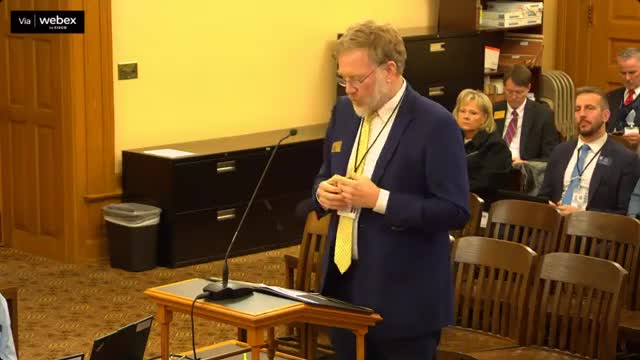KBI reports 25% agent pay increase boosts recruitment to largest class in over a decade
January 08, 2025 | Special Committee on State Employee Compensation, Special & Select, Committees, Legislative, Kansas
This article was created by AI summarizing key points discussed. AI makes mistakes, so for full details and context, please refer to the video of the full meeting. Please report any errors so we can fix them. Report an error »

In a recent meeting of the Special Committee on State Employee Compensation in Kansas, significant discussions centered around the impact of recent compensation increases for state employees, particularly agents and forensic scientists. The committee highlighted the approval of substantial increases in the Compensation Pay Plan (CPP) for 2024, amounting to $5 million for agents and $8 million for forensic scientists. This represented a 25% increase for agents and a 12.5% increase for forensic scientists, marking a pivotal moment in addressing recruitment and retention challenges within the Kansas Bureau of Investigation (KBI).
The meeting revealed promising trends in recruitment following these pay increases. In previous years, the KBI faced declining applicant numbers, with only 118 applicants in 2020 and just 35 in 2022. However, the situation improved dramatically in 2023, with 110 applicants and the largest training class in over a decade, comprising 18 new agents. This surge in interest is attributed to the recent CPP increases, which have made KBI positions more competitive compared to local departments.
Moreover, the committee noted that some candidates who had previously declined job offers due to better pay elsewhere reconsidered after the CPP adjustments. This indicates a direct correlation between compensation and the agency's ability to attract qualified personnel.
While the effects of the CPP increases on forensic scientists are still being assessed, preliminary observations suggest a positive trend in retention. The laboratory director reported that some scientists who were contemplating leaving have chosen to stay, hinting at the potential long-term benefits of the pay adjustments.
The committee emphasized the importance of continuing to monitor these trends and pledged to provide further updates on the effectiveness of the CPP increases. As discussions progress, the focus will also shift to future compensation requests for 2026, underscoring the ongoing commitment to enhancing employee satisfaction and operational effectiveness within the state workforce.
The meeting revealed promising trends in recruitment following these pay increases. In previous years, the KBI faced declining applicant numbers, with only 118 applicants in 2020 and just 35 in 2022. However, the situation improved dramatically in 2023, with 110 applicants and the largest training class in over a decade, comprising 18 new agents. This surge in interest is attributed to the recent CPP increases, which have made KBI positions more competitive compared to local departments.
Moreover, the committee noted that some candidates who had previously declined job offers due to better pay elsewhere reconsidered after the CPP adjustments. This indicates a direct correlation between compensation and the agency's ability to attract qualified personnel.
While the effects of the CPP increases on forensic scientists are still being assessed, preliminary observations suggest a positive trend in retention. The laboratory director reported that some scientists who were contemplating leaving have chosen to stay, hinting at the potential long-term benefits of the pay adjustments.
The committee emphasized the importance of continuing to monitor these trends and pledged to provide further updates on the effectiveness of the CPP increases. As discussions progress, the focus will also shift to future compensation requests for 2026, underscoring the ongoing commitment to enhancing employee satisfaction and operational effectiveness within the state workforce.
View full meeting
This article is based on a recent meeting—watch the full video and explore the complete transcript for deeper insights into the discussion.
View full meeting
